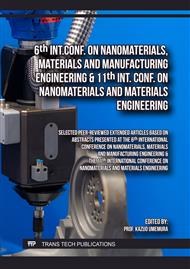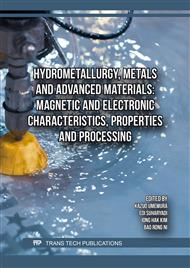p.3
p.11
p.17
p.25
p.33
p.41
p.53
p.59
Consistency of Microstructure and Mechanical Properties of Carbon Steel Manufactured by Wire Arc Additive Manufacturing with Different Production Systems
Abstract:
Wire Arc Additive Manufacturing (WAAM) is an emerging technology for producing large scale metal components, offering significant advantages in material efficiency and reduced production time compared to conventional methods. This study investigates the microstructure and mechanical properties of carbon steel produced using two different WAAM systems: the Fronius TransPuls Syn ergic 2700 CMT and the Kemppi X5 500 Pulse+ systems. Both systems utilized similar operating parameters, yet exhibited subtle differences in microstructure, including grain size and phase distri bution. Due to slight microstructural variations, the mechanical properties, such as tensile strength, hardness, and fatigue performance, were nearly identical for both materials. The findings demonstrate the potential of WAAM to produce high-quality carbon steel components with consistent mechanical properties, highlighting its suitability for applications requiring large, custom metal parts.
Info:
Periodical:
Pages:
25-31
Citation:
Online since:
June 2025
Authors:
Price:
Сopyright:
© 2025 Trans Tech Publications Ltd. All Rights Reserved
Share:
Citation:



